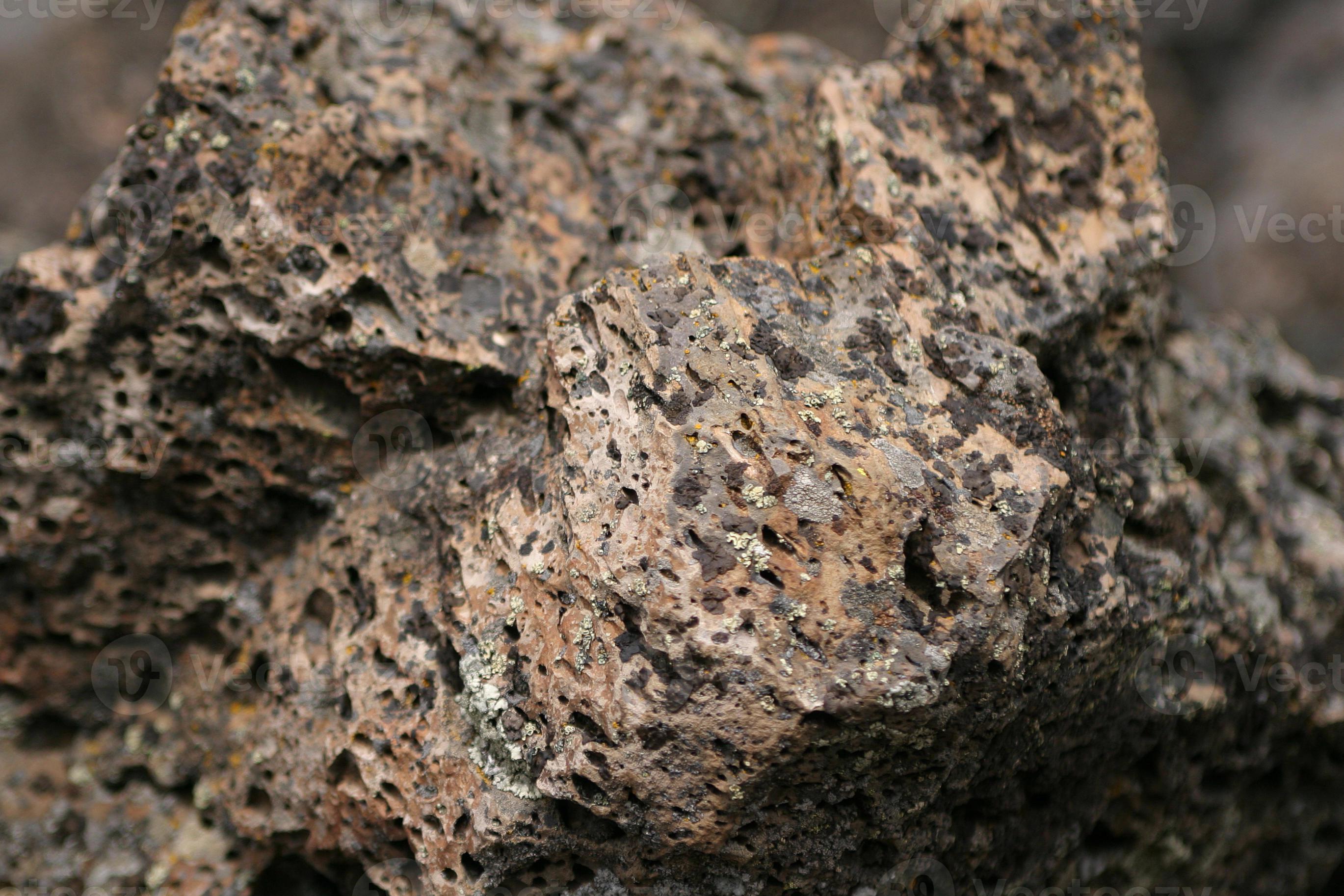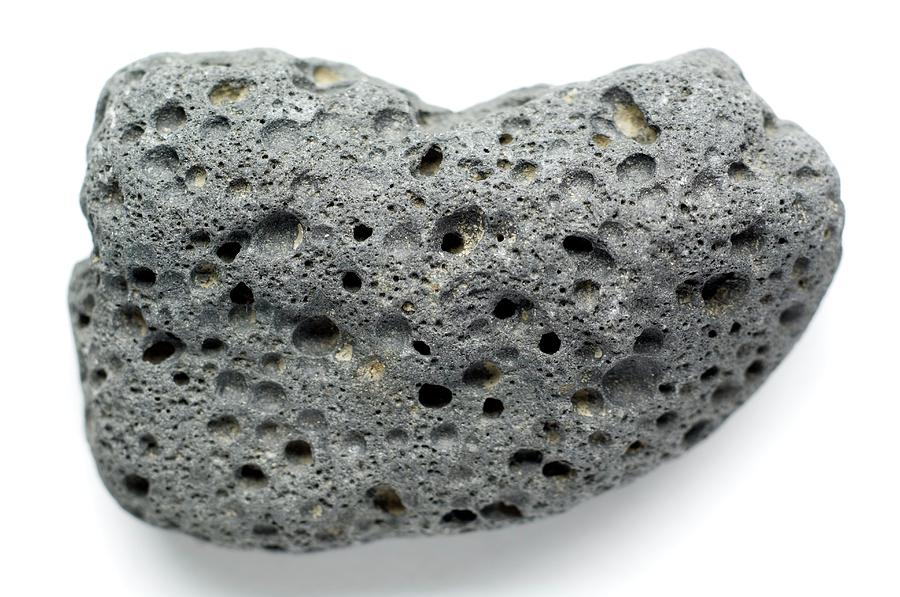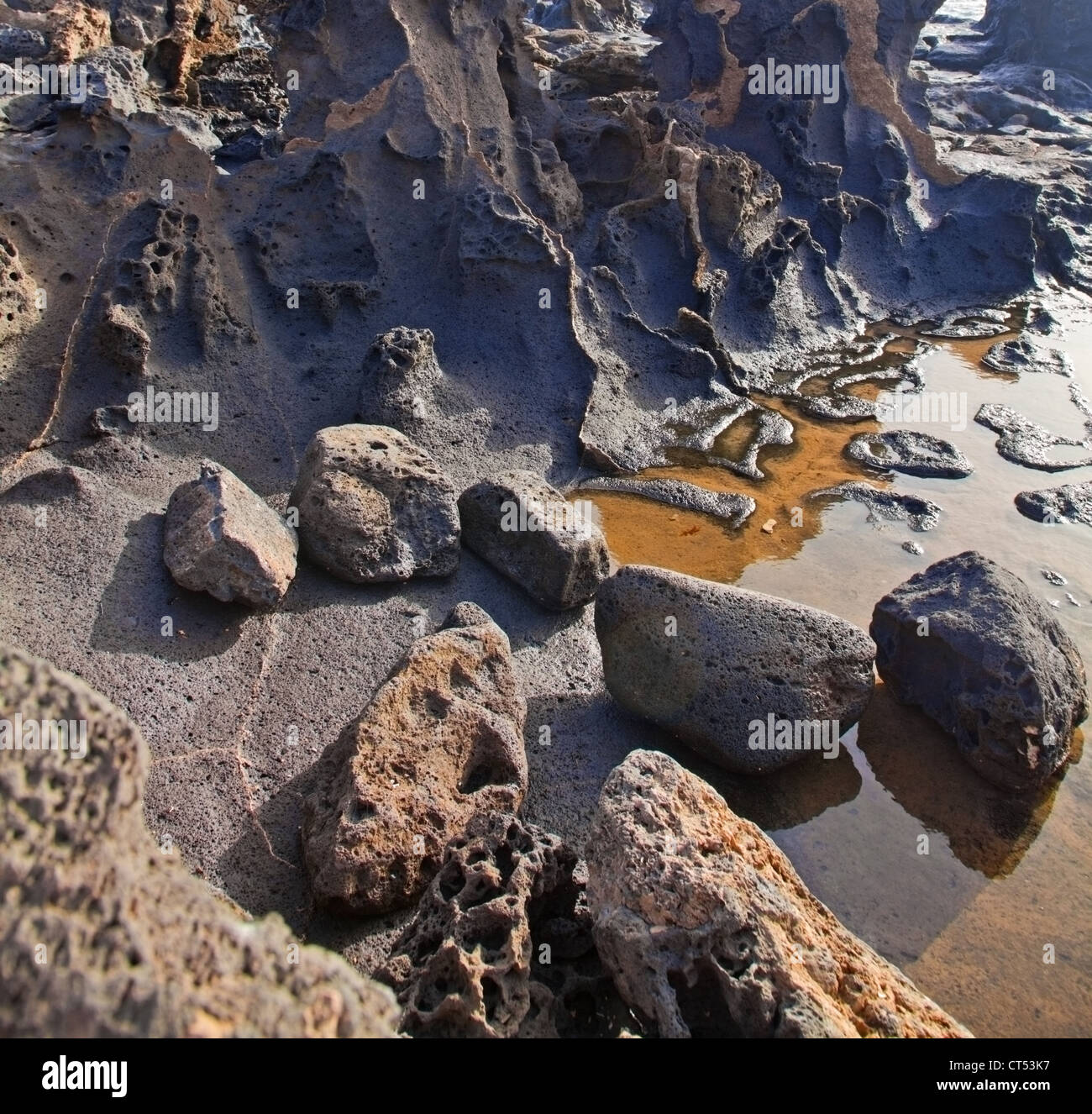
183 photos of Black Lava Porous Rocks Rock collage, Landscape, Volcanic rock
Scoria. Scoria is a pyroclastic, highly vesicular, dark-colored volcanic rock formed by ejection from a volcano as a molten blob and cooled in the air to form discrete grains called clasts. It is typically dark in color (brown, black or purplish-red), and basaltic or andesitic in composition. Scoria has relatively low density, as it is riddled with macroscopic ellipsoidal vesicles (gas bubbles.

Volcanic rock porous texture detail Stock Photo Alamy
Pumice is a very light, porous volcanic rock that forms during explosive eruptions. During the eruption, volcanic gases dissolved in the liquid portion of verz viscous magma expand very rapidly to create a foam or froth; the liquid part of the froth then quickly solidifies to glass around the gas bubbles.

Natural Porous Volcanic Rock Stones Used To Decorate the Garden or Parts of the House Indoor or
Article Types of volcanic rock Resource Add to collection Rocks are not all the same. Some are heavy, some are light. Others are dark, while some can be almost pure white. Even igneous rocks that are all formed from magma in the Earth's mantle can look very different. Igneous rocks

Porous Volcanic Rock of the Azores. Closeup. Texture. Island of San Miguel Stock Photo Image
-Porphyry: Porphyry is an intrusive igneous rock with a porosity that can range from low to high. It is often used in construction. -Tuff: Tuff is a volcanic rock with a high porosity. It is often used in construction. -G neiss: Gneiss is a metamorphic rock with a variable porosity. It is often used in construction.

Porous Black Volcanic Rock Isolated on White Background. Lava Stone, Pumice Stone, or Volcanic
The Crossword Solver found 30 answers to "porous volcanic rock", 6 letters crossword clue. The Crossword Solver finds answers to classic crosswords and cryptic crossword puzzles. Enter the length or pattern for better results. Click the answer to find similar crossword clues . Enter a Crossword Clue Sort by Length # of Letters or Pattern Dictionary

The Surface of Graypink Porous Volcanic Rock Stock Photo Image of backdrop, material 172398222
pumice, a very porous, frothlike volcanic glass that has long been used as an abrasive in cleaning, polishing, and scouring compounds. It is also employed as a lightweight aggregate in precast masonry units, poured concrete, insulation and acoustic tile, and plaster.

Porous Black Volcanic Rock. Lava Stone, Pumice Stone, or Volcanic Pumice with Distinctive Pores
Pumice ( / ˈpʌmɪs / ), called pumicite in its powdered or dust form, is a volcanic rock that consists of highly vesicular rough-textured volcanic glass, which may or may not contain crystals. It is typically light-colored.

Porous Volcanic Rock with Lichens 739155 Stock Photo at Vecteezy
Updated: 08/09/2022 What is a Volcanic Rock? Volcanoes are fissures in the earth's crust that expel liquid, solid, and gaseous matter from the interior of the Earth. Volcanoes are cone-shaped.

Porous Volcanic Rock Photograph by Daniel Sambraus/science Photo Library Pixels
Although the evolution of the permeability of the studied porous volcanic rock in the brittle and ductile regimes is qualitatively similar to that for porous sedimentary rocks, the porosity sensitivity exponent of permeability in the elastic regime is higher than found previously for porous sedimentary rocks.

183 photos of Black Lava Porous Rocks Landscape, Rock, Volcanic rock
Pumice is a light-colored, extremely porous igneous rock that forms during explosive volcanic eruptions. It is used as aggregate in lightweight concrete, as landscaping aggregate, and as an abrasive in a variety of industrial and consumer products.

Free Images stone, formation, soil, material, geology, basalt, volcanic rock, porous, igneous
The term peperino (from the Latin root piper, pepper) was originally established in Italy to define peculiar light porous volcanic rocks with a granular texture (resembling ground pepper), used as construction stones since pre-Roman times.Generally speaking, peperino is a kind of "diamictite" (sensu Flint et al. 1960), that is a lithified, poorly sorted, deposit consisting of "floating.

Porous Brown Volcanic Rock. Lava Stone, Pumice Stone, or Volcanic Pumice with Distinctive Pores
porosity permeability 1. Introduction The 'Serie Tobı́fera' is an informal subsoil name in the Austral Basin. Traditionally, this thick volcanic sequence was envisaged as a secondary reservoir target for oil and gas exploration because of its apparently random reservoir condition.

Porous Black and Brown Volcanic Rock. Lava Stone, Pumice Stone, or Volcanic Pumice with
For years, scientists have found pumice, a porous volcanic rock, scattered on the beaches and mangroves of Belize, despite the lack of volcanoes in the immediate area. Thanks to the persistence of one curious scientist, a diverse group has teamed up to solve this great pumice mystery, ultimately producing a better understanding of how.

183 photos of Black Lava Porous Rocks Rock, Lava, Volcanic rock
Compiled data show that, although porosity exerts a first-order influence on the uniaxial compressive strength of volcanic rocks, parameters such as the partitioning of the void space (pores and microcracks), pore and crystal size and shape, and alteration also play a role.

Porous lava volcanic rock around around Playa de la Concha beach in El Cotillo La Oliva
14.3.8.1 Porous rock. Porous rock contains empty space in which fluids, such as compressed air, can be stored. Porosity is defined as the percentage of a rock that is empty and can be used for storage. A porosity of >10% is needed for CAES (sandstone, shale, and limestone are examples of such rocks). The ideal geological structure containing.

old porous volcanic rock background Stock Photo Alamy
Igneous rocks are those that form via the process of melting and cooling. If they erupt from volcanoes onto the surface as lava, they are called extrusive rocks.By contrast, Intrusive rocks are formed from magma that cools underground. If the intrusive rock cooled underground but near the surface, it is called subvolcanic or hypabyssal, and often has visible, but tiny mineral grains.